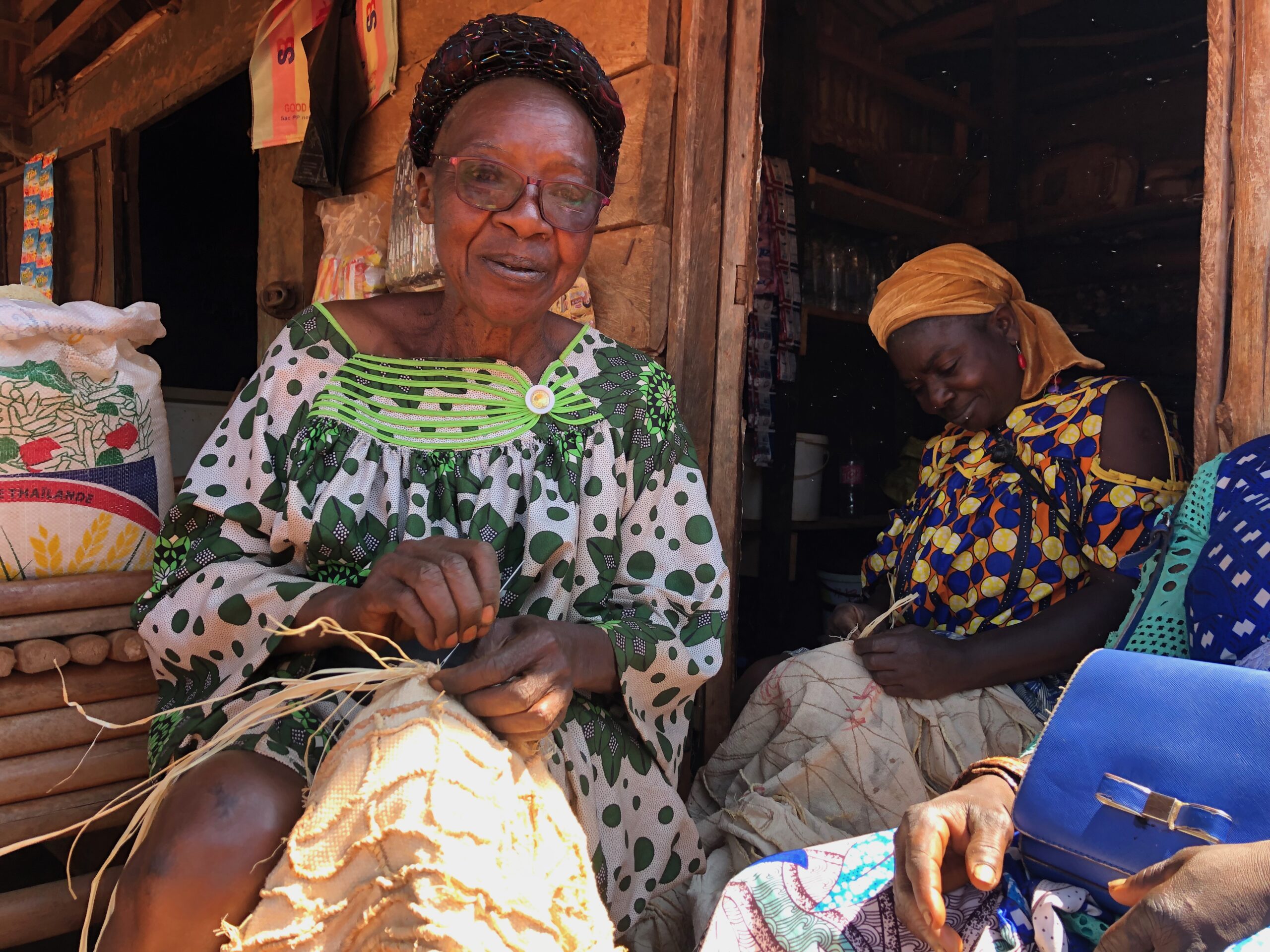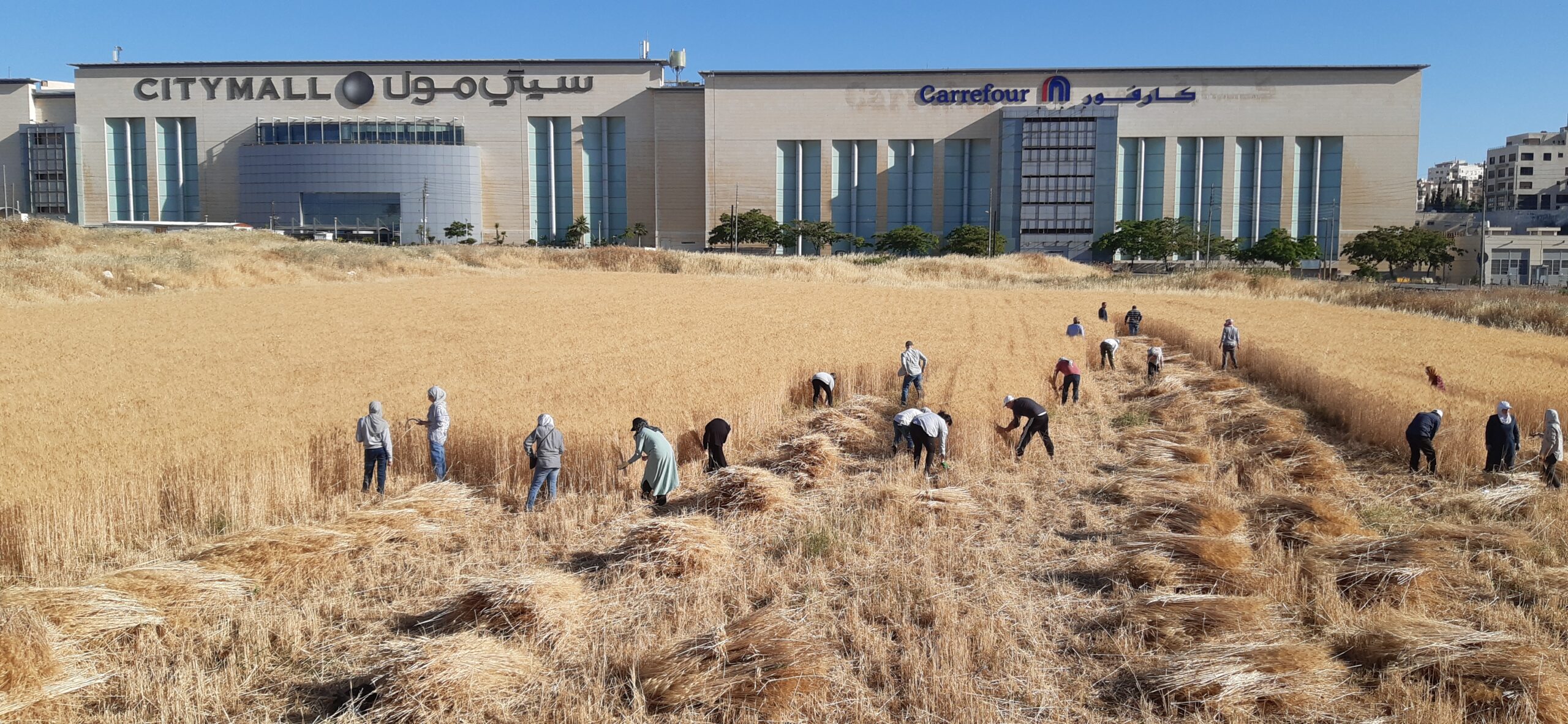Inside Orhan Pamuk’s Museum of Innocence and other Turkish wonders
Some places become museums because they’re ruins. Other museums are houses built to hold the relics.
In fifth century Constantinople, believers built a small Greek Orthodox chapel called The Church of the Holy Saviour in Chora. The Greek chora refers to the church’s place in the fields outside the city’s thick defensive walls. Rebuilt, restored, destroyed, and raised again over the centuries, the church became a truly glorified house of God in the fourteenth century under the stewardship of a powerful intellectual named Theodore Metochites, whose vision and funds decorated the interior with some of the finest mosaics and frescoes remaining from Byzantine times.
So lush and captivating are the colored walls and spotlight dome ceilings, I didn’t know where to look at first. Robed figures, towns, and deserts in soft reds, purples, and yellows compelled from all directions; natural light from an overcast day filtered through the top of a keyhole window. It was one of the most crowded visiting days of the year, so it’s significant to say that, in the midst of such traffic, once I found a clear view, the art rooted me, unjostleable, to a single spot. Jesus appeared to me as he never had before—meaning, not as an icon but appealingly human. His brow and nose are smooth but not rigid; fine hairs of a beard thicken at his chin. Cheeks are warm but not blooming. His expression is alert, neither stern nor indulgent, but like a father or friend who is listening, there to help. To his right, in the mosaic of the Deeis, is a genuflecting Mary, her head inclined toward her son with downcast, sorrowful eyes.
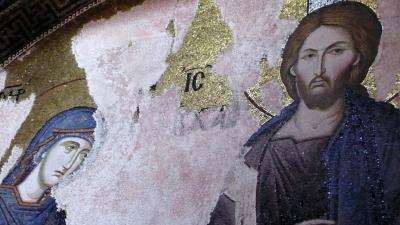
Despite my share of masses with a French Catholic babysitter and Easter Sundays with my father’s Methodist family, churches are unfamiliar places. I therefore approached the Chora Museum as a novelist; I imagined being familiar with all the characters and stories and how the selection and placement of the images would have enforced the messages of the liturgy.
Changed bit by bit over the years, the building’s bones and enclosures are disjointed, so the narrative cycles spanning walls and ceilings serve another, more practical purpose; they attempt to unify the interior. Themes of devotion to the Virgin morph across unnaturally adjoining surfaces into the promise of salvation. The past and the present unite in a dramatic scene of the Anastasis, in which a white-robed, radiant Christ raises up Adam and Eve from their tombs, the broken gates of hell below and the creature Satan reduced to a growl.
A day’s drive away, in the stunning central Anatolian region of Cappadocia, here, again, Christ splendidly extends both arms to resurrect the original sinners. The air in the barrel-vaulted Dark Church (Karanlik Kalise) is close and smells, slightly, of the pigeons housed here during the Ottoman Empire and into the days of the Islamic Turkish Republic (pigeons produce rich, valuable fertilizer). Yet this was the most transcendent church I’d seen so far; these dramatic, wall-sized frescoes were painted, so skillfully, in the unlikeliest of places. Accessed up a steep path, the Dark Church is one of several Byzantine chapels in the lunar-looking monastic complex of the GöremeOpen Air Museum. Over millions of years, volcanic ash rained down from the sky to create layers of sediment soft enough to chisel out dwellings and places of worship. Erosion by wind and water unevenly washed away the hillsides, leaving fantastical conical shapes, many topped with Alice in Wonderland toadstools.
To exit the church, we duck through a low doorway, wind through a narrow tunnel, and emerge into sun-warmed late-October air. I think about how much ancient human effort is preserved here in this gold-and-green land of rock-cut churches and early Christian saints. Looking around, you might think the Byzantines spent their time indulging their eyes and allowing their souls to soar, but there’s been much suffering here, too. Villagers were so often in the path of foreign marauding armies—Arabs, Mongolians, Crusaders—they were forced to carve vast underground cities to hide out in. Who kept look out and gave the signal to bury like moles? The monks. But up in the churches, preserved for today’s people to absorb some of the life of the past, the painstakingly painted frescoes remind of spiritual strength and our timeless human desire to be in the presence of the sublime.
In Turkey, Christianity is a thing of past, so its remnants are museums, unlike the gorgeous, domed and tiled Ottoman mosques that are historic places of worship still in use. These cozy, modest Byzantine museums are also a stark contrast to the gigantic reliquaries of major Western cities. The newly redone Islamic Art wing at the Metropolitan Museum in New York contains a whole Ottoman receiving room imported from Damascus. The Byzantine jewels I saw in Turkey are, on the other hand, structures preserved in their original locations. Approaching the Chora Museum, one skirts Constantine’s ancient crumbling walls (where unemployed men now drink and talk with their friends) and catches occasional views of the Golden Horn inlet, which divides Istanbul’s European side into north and south. To reach the monasteries of the open air museum, one drives through the big-sky GöremeValley, whose dips and curves reveal pockets of sandy-sided cave dwellings and peasant homes where pumpkin seeds dry on large, blue tarps.
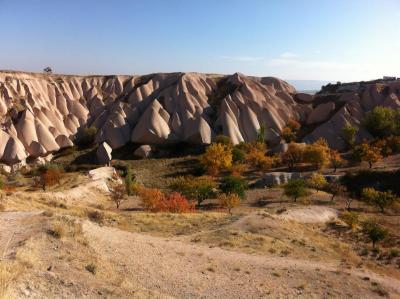
The appeal of these church museums comes not only from the quality of individual artworks, but also from what the fact of their execution in these unique settings reveals about life here, in this spot, long ago. These chapels draw you in, unsuspectingly, then catch your eye with a golden tile or red clay pot, lift up your head up and turn you slowly around. You drop your jaw. You take a breath. You marvel…how?…. You step outside, and the marvel remains.
These chapels made me wonder: What is it I want from a museum? Beauty alone I can find in a tea cup or a view of the sea. There must be more. Novelty, yes, that too: What I haven’t seen before to provoke what I haven’t previously thought. Also, coherence. Inherent in a museum is curation. Reasons and methods for arranging all these pieces just so. Finally, and certainly not least, information—a guide to Why should I care? These are the qualities that make for an experience that stays with me. Rare is the museum that can achieve highest marks in all areas, and failure in one doesn’t make a place worth missing, but these four qualities, I think, are the ideal.
So what is one to do with a house of preservation such as the Museum of Innocence? The creation of Nobel Prize-winning Turkish author Orhan Pamuk, this secular museum embodies the narrative of Pamuk’s novel of the same name: In 1970s Istanbul, a wealthy man, Kemal, falls in love with his poorer cousin Füsun. They have a passionate affair, and he suffers profoundly when she marries another man. The heart of the museum are glass cases of elegant and precisely arranged objects that remind Kemal of his beloved. The cases are numbered to correspond to the novel’s chapters.
For example, Chapter 45: “A Holiday on Uludağ.” In this diorama, the tiny figurine of a skier flies down a pillowy white slope the size of an envelope. Hanging nearby are sunglasses, a stamped postcard, and black and white photos of anonymous skiers.
Chapter 73: “Füsun’s Driving License.” A tall glass case containing a rose-printed dress fitted to an invisible form. The necklace and earrings hang in anatomically correct relation.
The narrow museum is dim, with little natural light; each case is specially spotlit. Visitors peer respectfully through the glass. An open stairway runs from the ground floor to attic, and each floor’s banister contains glassed-in layers of objects such as tea cups, spoons, and watches. A grandfather clock hangs silently. Clicking heels sound from no particular direction.
The mission of the Museum of Innocence is perfectly coherent: to display one man’s love and heartbreak through an idiosyncratic collection of objects from a particular time and place. In so doing, Pamuk writes in an August essay for Newsweek, he was intentionally creating a museum in opposition to those of his childhood: “authoritarian displays of various objects whose purpose we could not quite fathom, belonging to kings, sultans, generals, and religious leaders whose lives and histories were far removed from ours. Nevertheless, we still knew exactly what we were supposed to feel: respect for that thing known as “national history”; fear of the power of the state; and a humility that overshadowed our own individualities.”
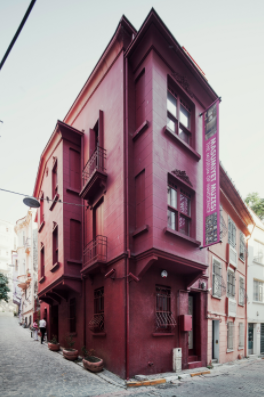
He continues, “I think that if museums, like novels, would focus more on private and personal stories, they would be better able to bring out our collective humanity.” Inspiring fellow feeling in citizens from around the globe is a grand goal, though perhaps not inappropriate. I imagine that Theodore Metochites, patron of the Chora Church restoration, also believed a magnificent narrative vision was necessary to save Christian souls. Just as Chora’s churchgoers would have experienced the stories of the Virgin and Christ in both images and in words, Pamuk’s novel and museum use different aesthetic tools to tell the same narrative. “What triggers the creative mind, in art as in literature,” he says, “is not just the will to transmit the energy of ideas, but also the desire to engage physically with certain issues and objects.”
There is a crucial difference between Chora and the Museum of Innocence, however. The images in Byzantine chapels engaged the public in a shared iconography; whereas the world of Pamuk’s museum feels private—the connection to the public tangential. The objects displayed are artifacts from the real world, but they belong to a character known only to those who have read the novel.
I deeply admire Pamuk’s heartfelt ambition, and his project is exquisitely executed. And yet I think the museum is a failure. It fails not in novelty or beauty or coherence, but in context and information. I found examining these curious, handsome objects as disorienting as entering a place of worship whose religion I do not practice. Yet, here, guides are not provided.
Except: On a cushioned bench in the corner are hardcover copies of The Museum of Innocence. I open the book to page 8 and my eyes fall upon this phrase: “…as you can see in this school photograph I found years later…” I get excited and walk purposefully to Case 8. Finally I know what I am looking for. Pinned at the back of the case, I find a photograph of Turkish men in fezes sitting at a row of desks. The photo isn’t well lit, so I lean closer. When I realize it’s not a photo at all, but a drawing or painting, I am frustrated and disappointed. I think again of the alpine skiers from Case 45: Who were those people? Why should I care about them?
This museum is all about the intimate connection between a man and his things. If, not having read the novel, all I know of the man are these things—not how he acquired them or even, in some cases, what they are—I stand to gain very little from looking at them. I was surprised to realize that I, raised Jewish, felt a more intimate connection with a flat-faced Judas at the Last Supper in a Byzantine cave church.
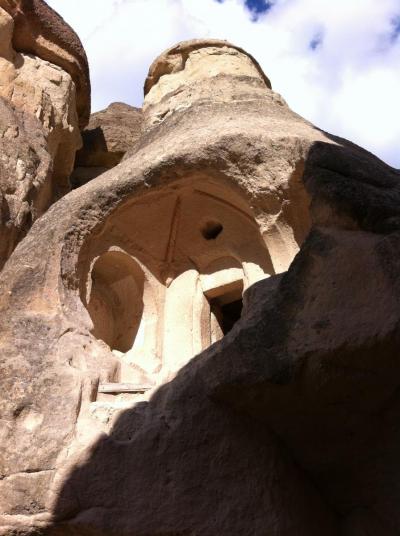
Then I arrived in the attic. At the top of the stairs, to the right, is Kemal’s bedroom set, complete with slippers, a chair, and a nightstand hosting scissors, watch, lamp, keys, water bottle, and drinking glass. A framed picture is turned toward the bed, away from the viewer. To the left is a display case containing spiral-bound notebooks and even rows of empty pen ink cartridges. Here are Pamuk’s drafts of The Museum of Innocence. The explanatory cards (context! information!) relate the content of the pages and where and when Pamuk wrote them. He wrote the first sentence, over and over, in the New York Public Library on 42nd Street. Here is revealed, finally, a distinctive, gifted, melancholic mind at work. What particularly touched me were the sketches (Pamuk studied to be a architect); one shows a row of red houses couched in green next to the sea. The accompanying caption: “While writing the novel, Pamuk would fill up empty pages in his notebook with the view from whatever room he was in.” While he was writing the novel, Pamuk was also put on trial for insulting Turkish honor. The resulting hate campaign was such that he temporarily left the country.
Studying Pamuk’s pages, considering his trials, I think of a mosaic above the nave in the Chora Museum in which a turbaned Theodore Metochites presents to Christ Pantocrator on bended knee a scale model of his reinvented church. Not long after finishing the renovation, Metochites’s political fortunes turned and he was forced into exile. Later, he was allowed to return to Constantinople to live out the rest of his days as a monk at his beloved Chora. Like Metochites, Pamuk is a patron. His devotion to his homeland has beautifully reinvented one aspect of it, though we understand his message more through his words than his objects.
Jennifer Acker’s monthly essays “From the 17th Floor” are in conversation, directly or slant-wise, with contributor Martha Cooley’s Italy series “From the Stone House.” Together the two writers reflect on their recent physical and mental travels, on displacement and (re)settling, on explorations and discoveries that excite or discomfit, and, naturally, on literature and other arts.
Jennifer Acker is the founding editor of The Common.
Photos from Flickr Creative Commons, from Jennifer Acker, and from the Innocence Foundation and Rekif Anadol.

